‘We can’t lose focus on tiger conservation’
Q&A with Kanchan Thapa, Wildlife Lead,
WWF Nepal
Looking Back and Moving Forward: WWF Leaders in
Tiger Conservation 2010-2022
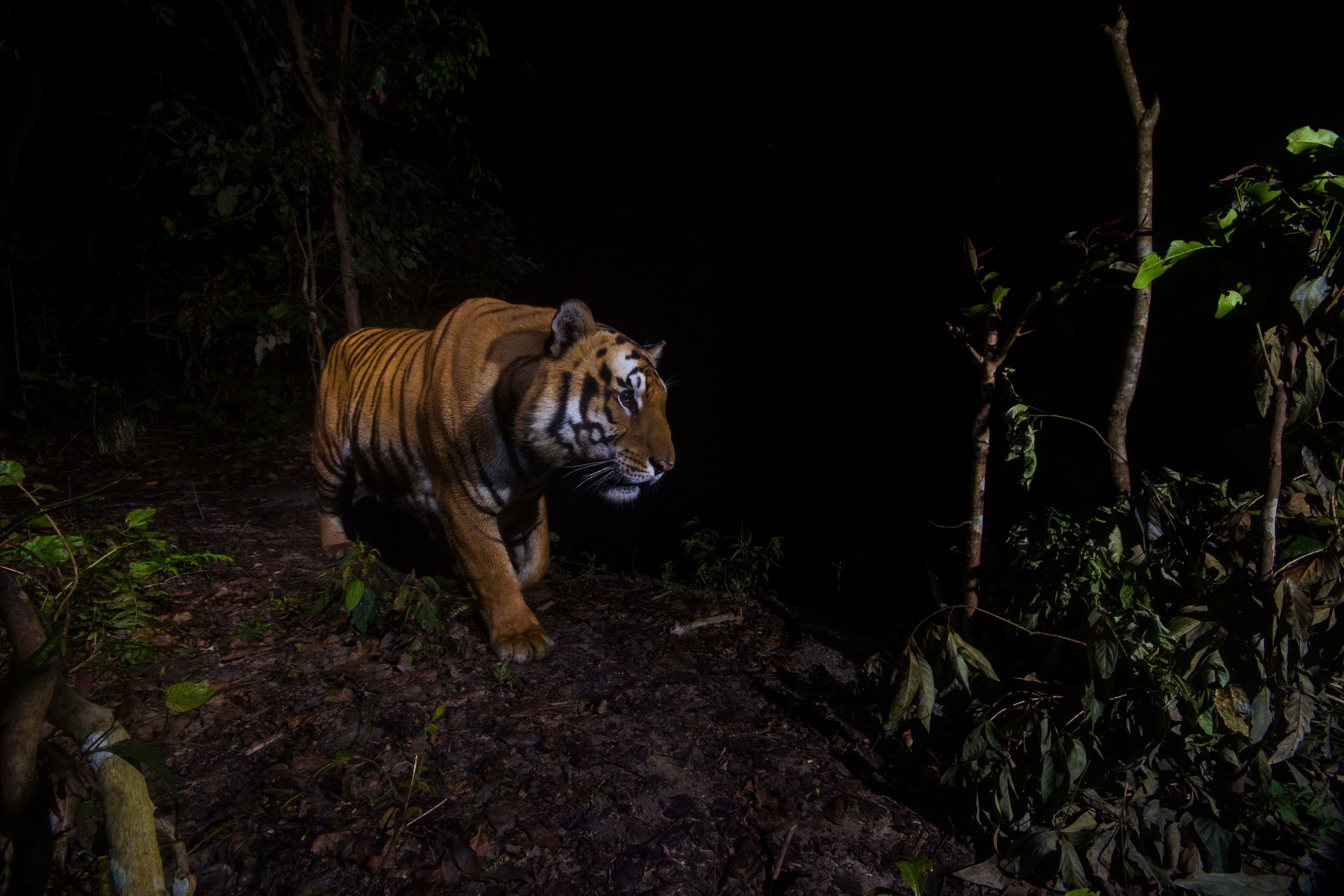
In 2022, Nepal earned yet another conservation milestone: not only doubling, but nearly tripling their wild tiger numbers. How did a relatively small climate-vulnerable country that has faced political, economic, environmental and social instability over the past decades achieve this remarkable feat?
People. A network of people on the ground — with support from all corners of the world — came together for it to happen. This team included people living closest to tigers in buffer zone communities, government leaders helping guide conservation on the national level, and wildlife experts like Dr. Kanchan Thapa.
For over 20 years, Dr. Kanchan Thapa, an environmentalist turned wildlife biologist, has helped move Nepal’s tiger conservation and monitoring strategies beyond paper, policies and plans, resulting in world-leading tiger conservation success. From designing Nepal’s first tiger monitoring protocol in 2008 to undertaking the country’s first non-invasive genetic survey of tiger populations, he has played a front and centre role ‘behind the scenes’ in pushing Nepal’s tigers back onto the path of recovery.
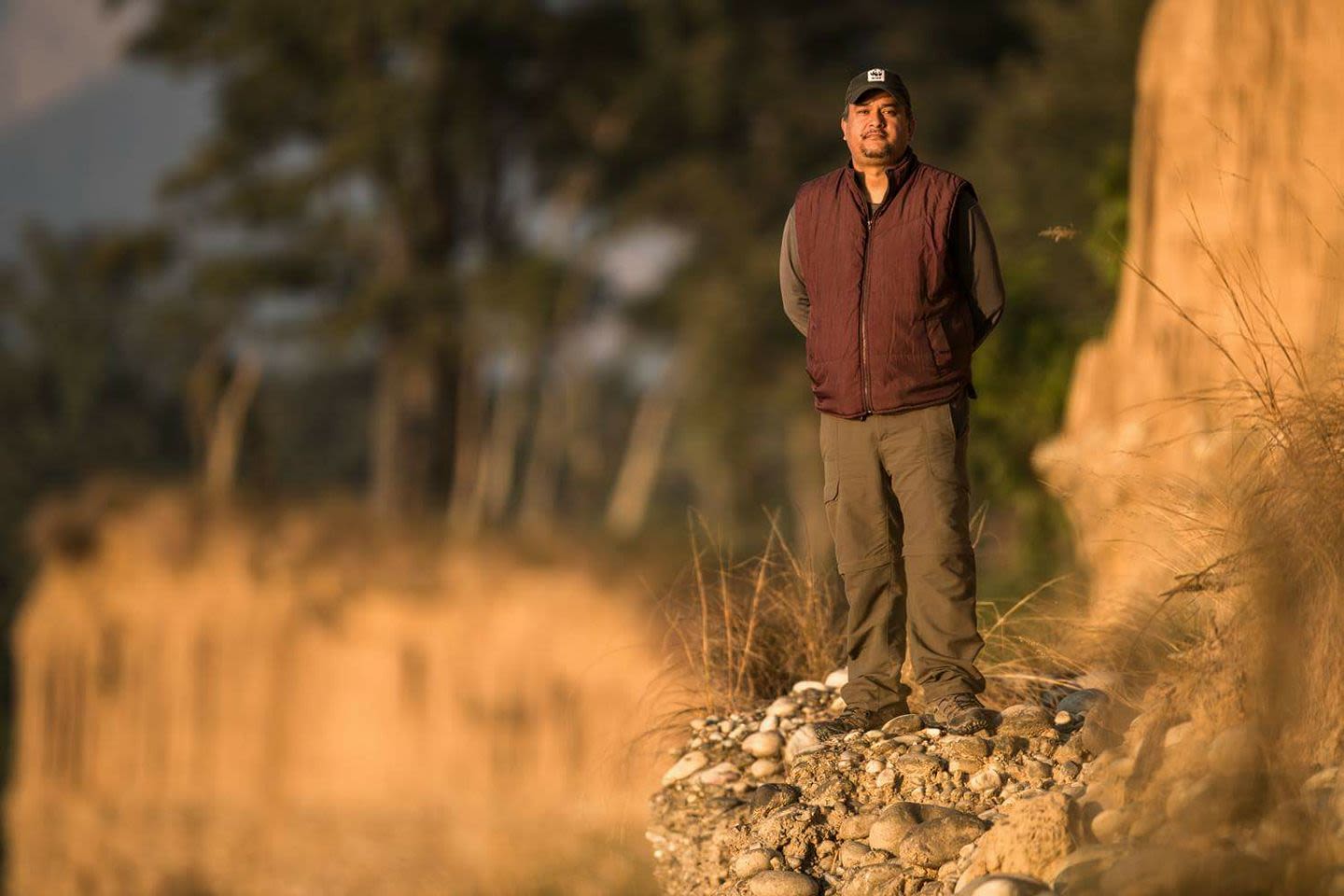
Dr. Kanchan Thapa pictured atop a ridge in Chitwan National Park. © WWF Nepal
Dr. Kanchan Thapa pictured atop a ridge in Chitwan National Park. © WWF Nepal
Let’s start with what it means to be a ‘wildlife biologist.’ What’s one misconception people have about what you do?
Just because you’re a ‘wildlife biologist’ doesn’t mean you’re constantly encountering the species you’re studying out there in the wild. Some of us spend weeks, months and even years at a time searching for our focal species only to encounter it a handful of times. We’re dealing with an extremely rare and elusive species here.
It took me 20 years of working as a wildlife biologist mainly focused on tigers to lay eyes on a tiger in the wild within Nepal. I’ve spent weeks at a time surveying this country’s forested landscapes, venturing deep into known tiger territory, observing tiger marks and scat, without ever spotting any stripes.
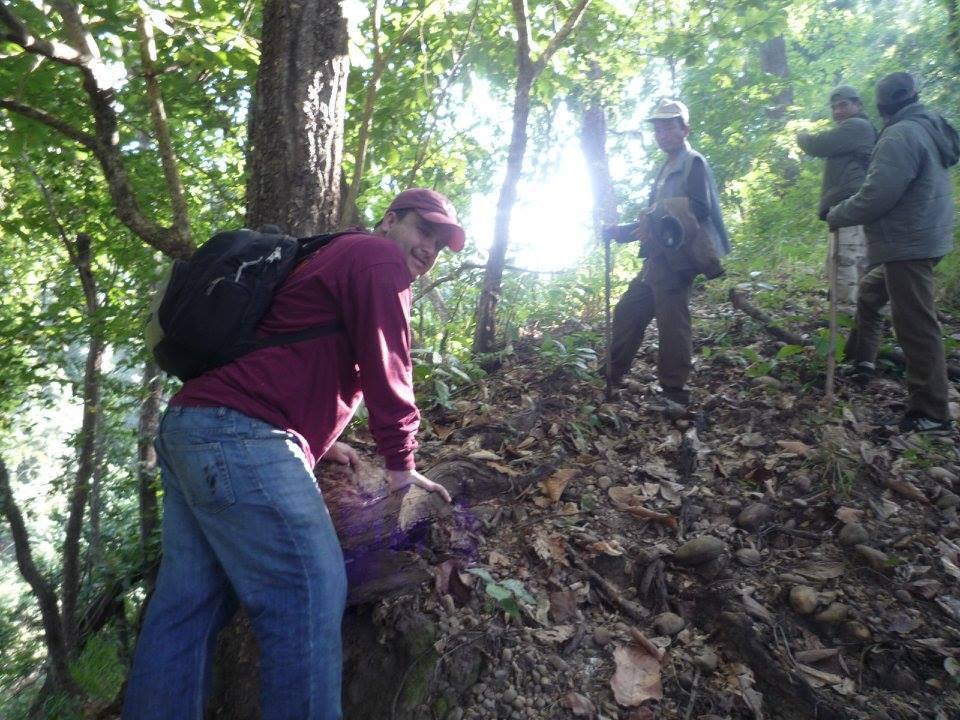
As a Research Officer for WWF Nepal, Dr. Kanchan Thapa often ventured deep into tiger habitat alongside partners, including rangers and local community members. © Photo courtesy of Kanchan Thapa
As a Research Officer for WWF Nepal, Dr. Kanchan Thapa often ventured deep into tiger habitat alongside partners, including rangers and local community members. © Photo courtesy of Kanchan Thapa
I broke that spell in early 2020, when I was visiting Bardia National Park. I saw a young male tiger momentarily emerge from tall stalks of grass to quench its thirst. It was well worth the wait.
Take us back to the early days in your tiger conservation journey. What was Kanchan Thapa doing when he first started out as a wildlife biologist?
I started my conservation journey in 2002 as a Research Officer for WWF Nepal, tasked with monitoring wildlife within the Terai Arc Landscape (TAL), a 49,500 km2 stretch of forests, across both India and Nepal, that are home to nearly 80 percent of the world’s wild tigers and millions of people who rely on tiger habitat for their livelihoods.
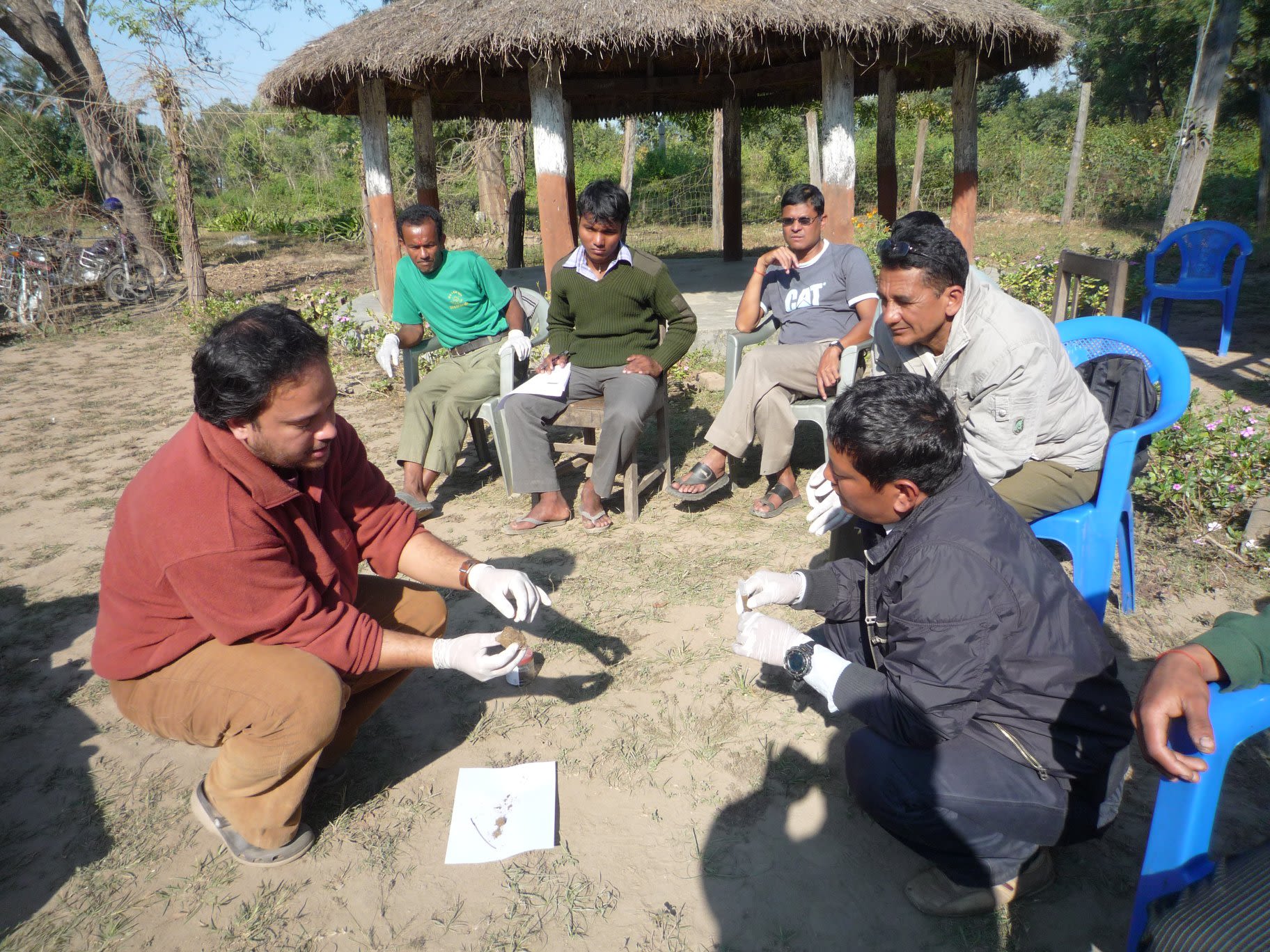
Kanchan Thapa handles a recently collected tiger scat sample for discussion among colleagues during his PhD work in Chitwan National Park. © Photo courtesy of Kanchan Thapa
Kanchan Thapa handles a recently collected tiger scat sample for discussion among colleagues during his PhD work in Chitwan National Park. © Photo courtesy of Kanchan Thapa
Since 2000, Nepal has moved towards a landscape-level conservation approach, which was the first time we were looking at tigers more holistically across landscapes rather than within the traditional protected area model. The Government of Nepal had just endorsed the long term vision of Terai Arc Landscape in 2001, which was unique because the entire landscape was designed based on a tiger dispersal model. This means it was designed specifically looking at which areas needed to be restored so that tigers could move between corridor areas and core habitat areas. As this landscape joins two countries, both India and Nepal, my role also required considerable transboundary cooperation and collaboration.
What was an early experience in ‘tiger monitoring’ that sticks out to you?
My first footing into tiger monitoring was in 2004, when I began surveying Shuklaphanta National Park, formerly Shuklaphanta Wildlife Reserve, the largest patch of continuous grassland in Nepal. We were trying to introduce new monitoring approaches and methodologies within the area at a time when Nepal was updating its tiger monitoring protocols based on international practices and standards. Basically, we were trying to count tigers.
It was a difficult task at the time because the methodology wasn’t as well-defined. So that’s what we were there to do, alongside cooperation across our partners — we were adopting a tiger monitoring protocol, testing it on individual areas and later trying to replicate it at the landscape level.
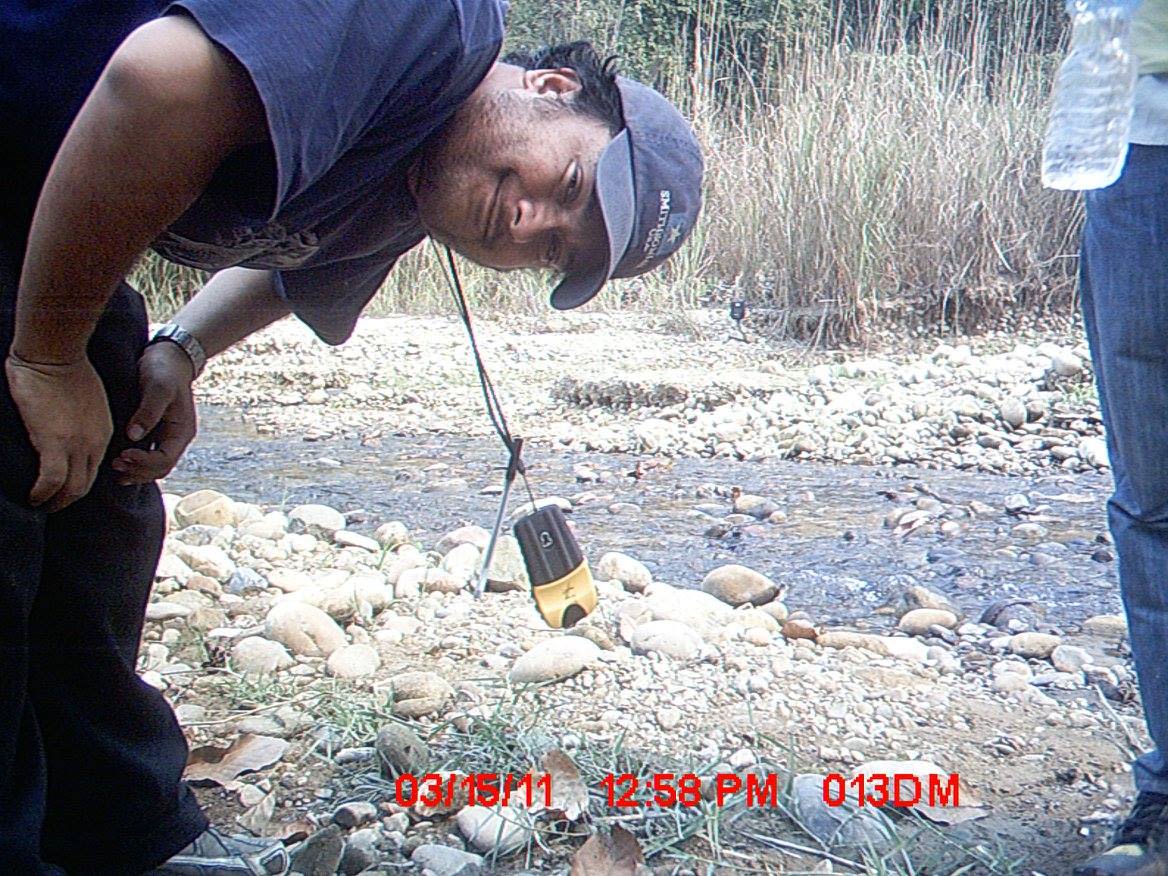
Dr. Kanchan Thapa tests out an installed camera trap during a monitoring survey in Chitwan National Park in 2011. © WWF Nepal
Dr. Kanchan Thapa tests out an installed camera trap during a monitoring survey in Chitwan National Park in 2011. © WWF Nepal
It was especially interesting working in Shuklaphanta because previous records had shown it was home to the highest density of tigers within Nepal. Sadly, tiger numbers plummeted across the area due to widespread poaching, especially during periods of political instability, and our tiger monitoring work was showing these trends throughout the landscape overtime.
So the data from Shuklaphanta and beyond was telling us that we needed to do something to protect the species; our monitoring work provided even more urgency for action.
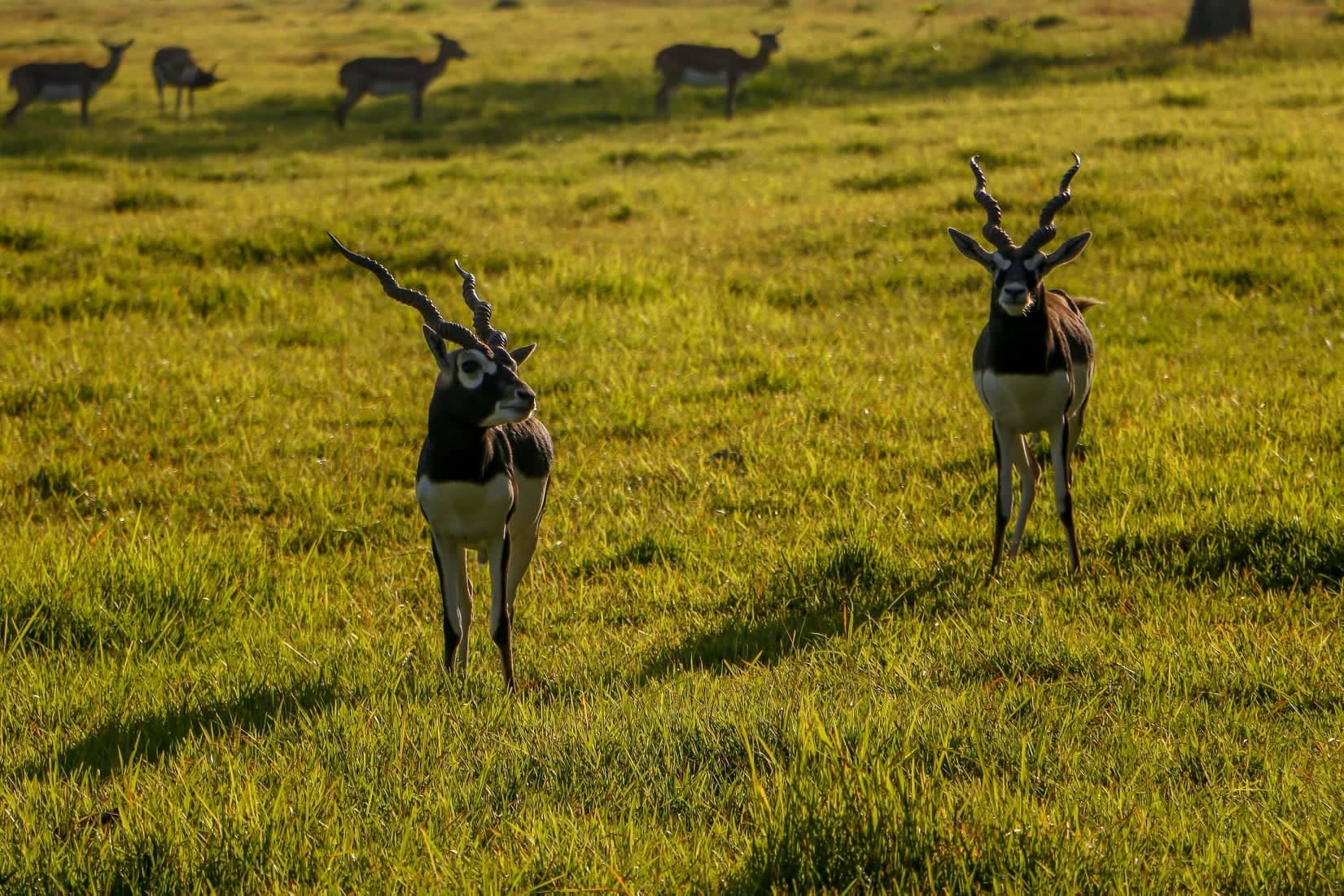
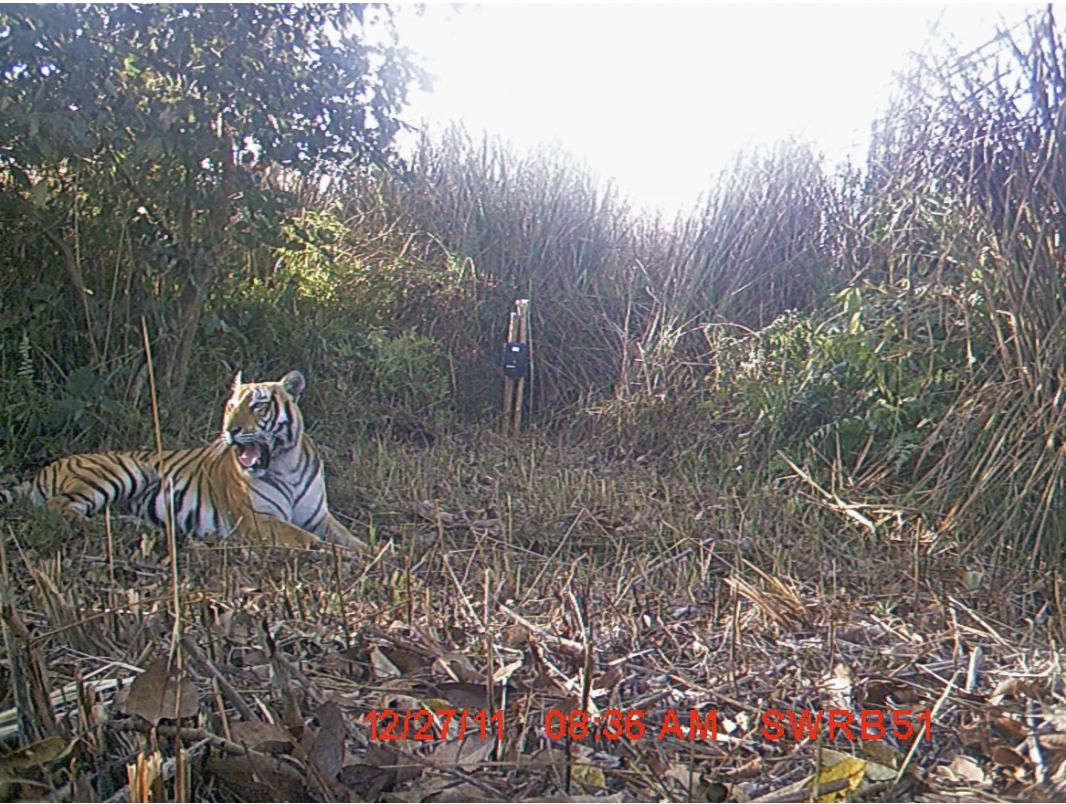
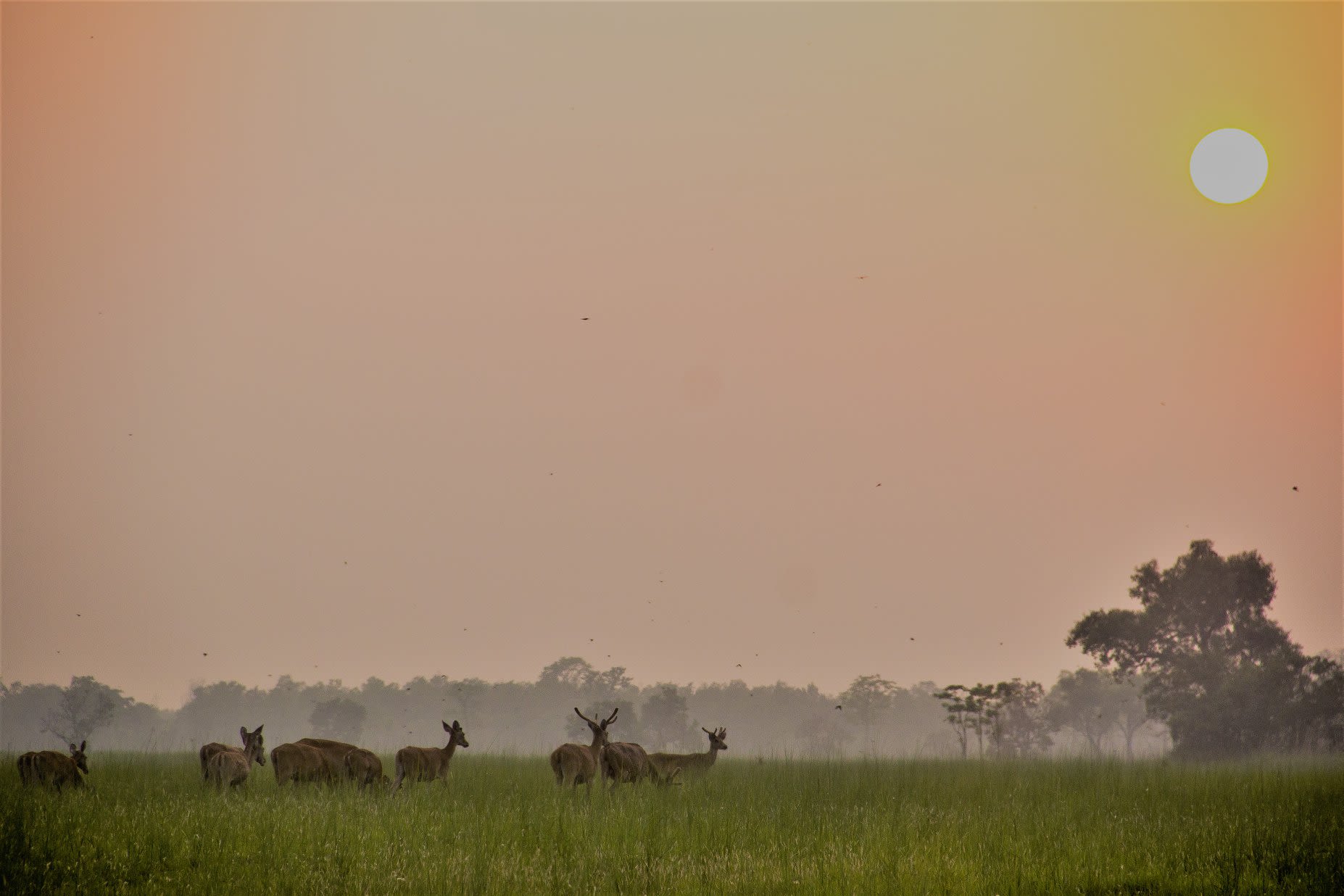

A blackbuck is seen among its herd in Shuklaphanta National Park, where its numbers have more than doubled in the past eight years. © Karun Dewan / WWF Nepal / Shuklaphanta
A blackbuck is seen among its herd in Shuklaphanta National Park, where its numbers have more than doubled in the past eight years. © Karun Dewan / WWF Nepal / Shuklaphanta

A tiger is captured by camera traps during a camera trap survey in 2011 in Shuklaphanta National Park (then Shuklaphanta Wildlife Reserve). © DNPWC / WWF Nepal
A tiger is captured by camera traps during a camera trap survey in 2011 in Shuklaphanta National Park (then Shuklaphanta Wildlife Reserve). © DNPWC / WWF Nepal

A herd of Swamp Deer (Rucervus duvaucelii) is seen as the sun sets over Shuklaphanta National Park. The largest herd of Swamp Deer in the world can be seen only in Shuklaphanta. © Karun Dewan / WWF Nepal
A herd of Swamp Deer (Rucervus duvaucelii) is seen as the sun sets over Shuklaphanta National Park. The largest herd of Swamp Deer in the world can be seen only in Shuklaphanta. © Karun Dewan / WWF Nepal
What was an early experience in ‘tiger monitoring’ that sticks out to you?
My first footing into tiger monitoring was in 2004, when I began surveying Shuklaphanta National Park, formerly Shuklaphanta Wildlife Reserve, the largest patch of continuous grassland in Nepal. We were trying to introduce new monitoring approaches and methodologies within the area at a time when Nepal was updating its tiger monitoring protocols based on international practices and standards. Basically, we were trying to count tigers.
It was a difficult task at the time because the methodology wasn’t as well-defined. So that’s what we were there to do, alongside cooperation across our partners — we were adopting a tiger monitoring protocol, testing it on individual areas and later trying to replicate it at the landscape level.
It was especially interesting working in Shuklaphanta because previous records had shown it was home to the highest density of tigers within Nepal. Sadly, tiger numbers plummeted across the area due to widespread poaching, especially during periods of political instability, and our tiger monitoring work was showing these trends throughout the landscape overtime.
So the data from Shuklaphanta and beyond was telling us that we needed to do something to protect the species; our monitoring work provided even more urgency for action.
Moving forward to 2010, how did you feel when the goal to double tiger numbers across the range was initially announced? What were your initial reactions?
By 2010, a lot of momentum had already built up across the tiger range. The situation in Nepal in the years leading up was pretty dire for wild tigers given decades of poaching over many years of political instability. In India, we were receiving news that tigers had virtually disappeared from core areas in their National Parks as well, including Sariska Tiger Reserve and Panna National Park, former strongholds for wild tigers.
The situation in India spurred a lot of conversation, which led to action. In 2005, the Government of India’s Tiger Task Force released Joining the Dots, a report that outlined their new approach for tiger monitoring. The report added to the push for action between 2006-2010 across South Asia, including in Nepal, to apply a more systematic approach to tiger monitoring.
I remember feeling like the monitoring work that was happening in the years prior — including Nepal’s first landscape-level tiger census in 2008-2009 — was helping to paint a clearer picture of just how dire things were for tigers in Nepal and across the range. By the time 2010 came around, we had good information to show to the world that the science was telling us we needed to focus on tiger conservation urgently, which only added to the global momentum.
It felt like what was happening here in Nepal was also being realised across the range and things were moving in synchronisation.
Did you feel the ambition to ‘double tiger numbers’ was possible for Nepal at the time?
To be honest, I remember being less preoccupied with the ‘doubling tiger numbers’ aspect and more focused on understanding how many tigers there were in Nepal in the first place.
I remember thinking even though it was an ambitious goal, there was clear science behind it; tigers are remarkable species because they reproduce in a relatively fast time under the right conditions. They need three simple things: habitat, food and water. So if we could focus on these three needs and on reducing poaching and illegal trade, we knew that tigers could bounce back.
Given the momentum I was seeing across governments, local communities and all other stakeholders, I knew that if we could all come together, Nepal could achieve the goal.
By 2013, when we completed another national census, we saw a growth in tiger numbers in some areas, which only confirmed that we were on the right track. And now, in 2022, our efforts have clearly paid off when we found that we’ve far exceeded the initial goal.
What do you attribute most strongly to Nepal’s success in tiger conservation?
First thing is protection. I would say over the years, the role played by people on the ground who have worked tirelessly to protect tiger habitats is one of the most important aspects of tiger recovery. The role played by communities living in Nepal’s buffer zones and corridor areas, those who live closest to tiger habitat, has been key to this protection, and their support has been among the most important factors to our success.
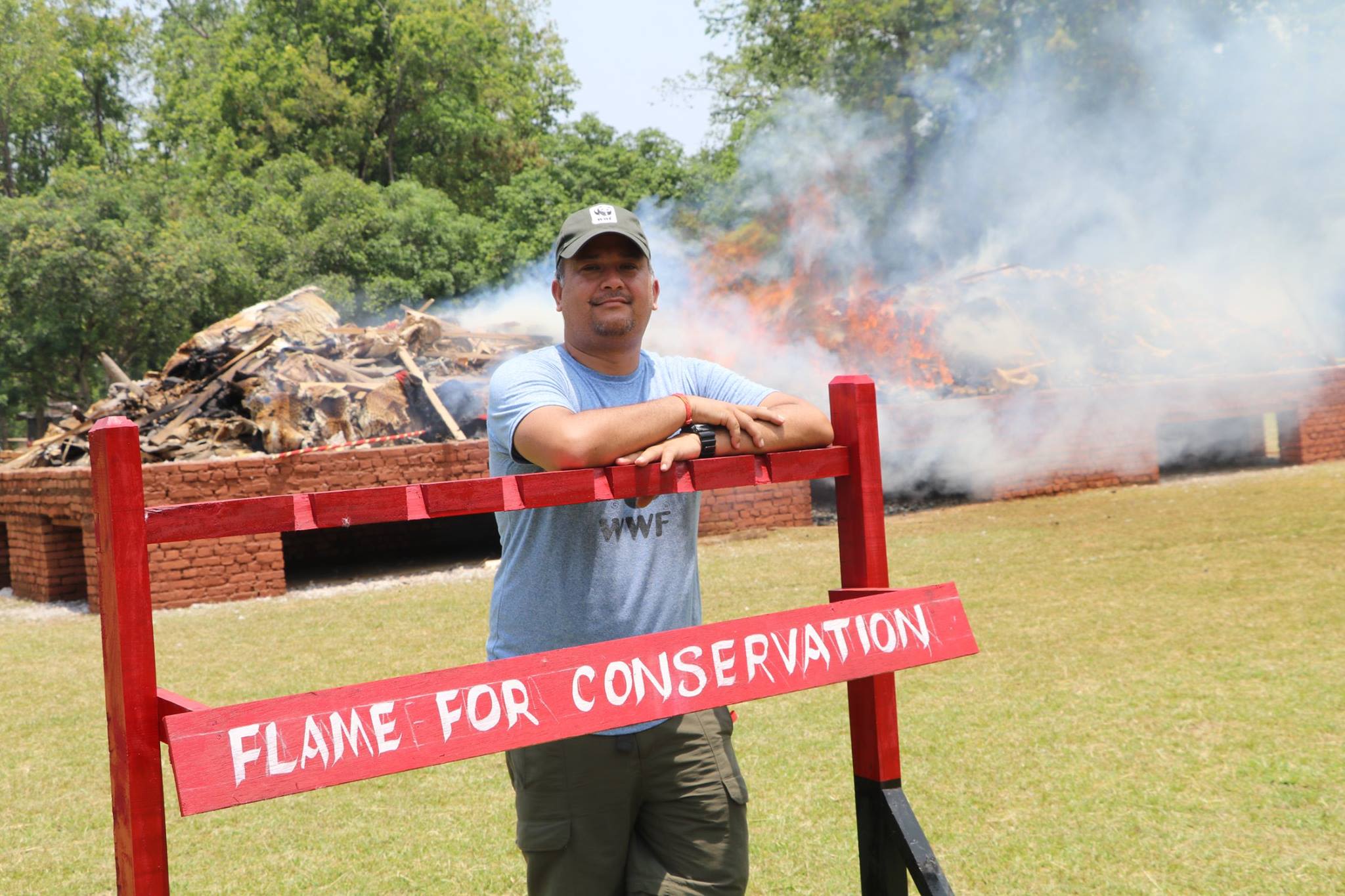
Dr. Kanchan Thapa poses in front of a stockpile of confiscated tiger parts and other illegal wildlife products being burned in Nepal, showing the nation’s commitment towards zero tolerance of wildlife crime. © Photo courtesy Kanchan Thapa
Dr. Kanchan Thapa poses in front of a stockpile of confiscated tiger parts and other illegal wildlife products being burned in Nepal, showing the nation’s commitment towards zero tolerance of wildlife crime. © Photo courtesy Kanchan Thapa
The second aspect is political will — right from local level all the way up to the highest level, we have been seeing sustained political will around tiger conservation, which has been key for securing this success.
The third is the role played by all the stakeholders and supporters around the world who provided financial and technical resources. We could not have achieved this feat without the extensive resources it required, so this support was also crucial.
All these factors coming together have allowed nature to recover and tigers to return in the way we are seeing now.
12 years after Nepal embarked on its commitment to double tiger numbers, how do you feel about the future of tigers in the country?
I’m very optimistic. In fact, 12 years into the future, I feel the conservation momentum in Nepal will only continue. But there are a number of challenges we need to overcome by the next Lunar Year of the Tiger 2034.
One challenge is human wildlife conflict, which is a profound issue at the moment that needs to be at the forefront of our tiger conservation agenda moving forward. Today, we are also facing a rise in infrastructure development within the country, which will continue to fragment a number of key tiger habitat areas, ultimately bringing tigers and people closer together. Not to mention the climate crisis, which will continue impacting existing tiger habitat and prey.
So while I am optimistic, it is vital that we keep the momentum alive; we need to continue talking about tigers. If we don’t talk about tigers, we can easily undo decades of progress within a matter of a few short years.
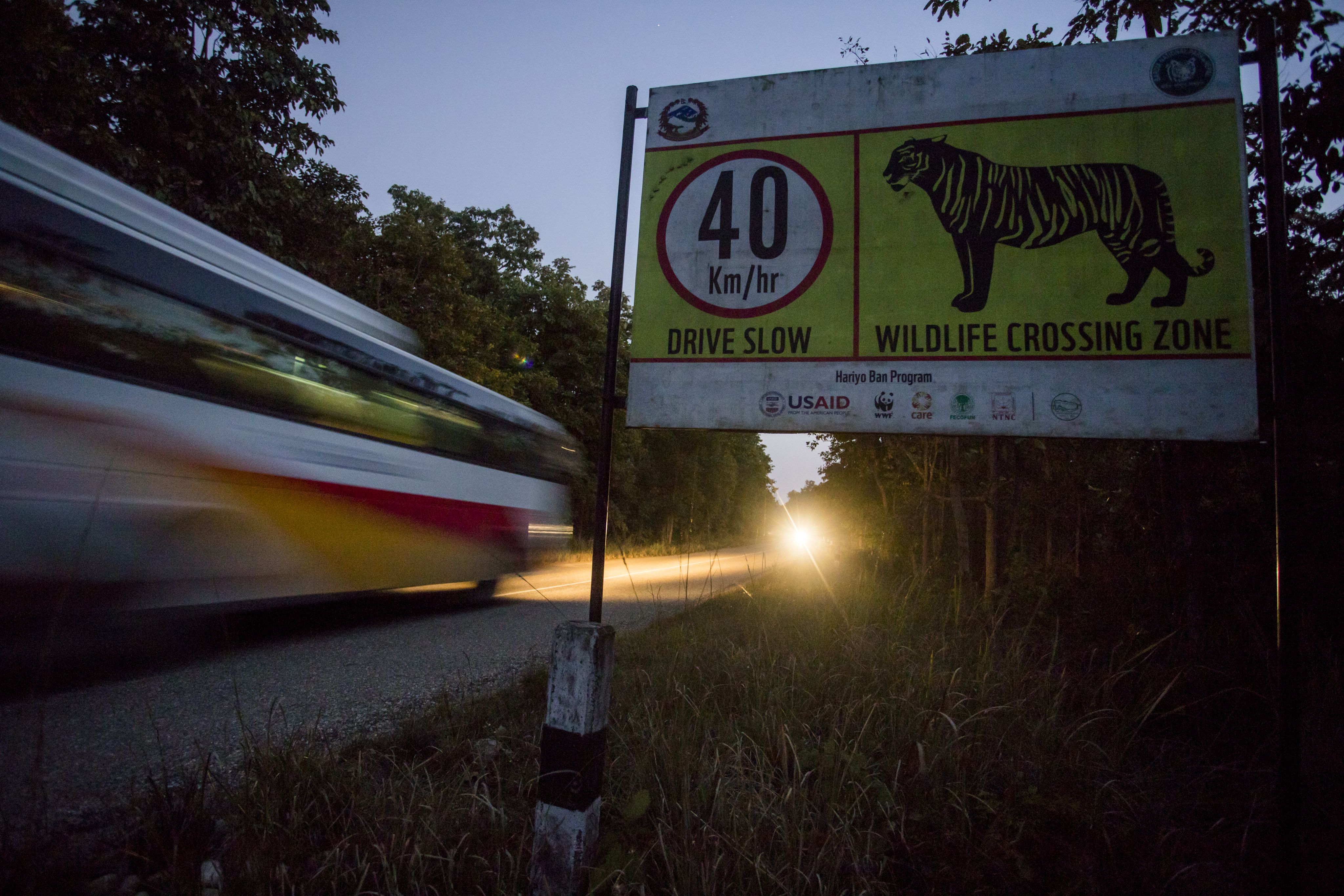
Road sign alerting drivers of possible tiger crossing on this highway (H01) cutting through Bardia National Park, and leading to the city of Chisapani, Nepal. © Emmanuel Rondeau / WWF US
Road sign alerting drivers of possible tiger crossing on this highway (H01) cutting through Bardia National Park, and leading to the city of Chisapani, Nepal. © Emmanuel Rondeau / WWF US
Tiger conservation isn’t a 12-year commitment; it’s not like once you’re done, it’s done. We need to keep the momentum going continuously, 24 hours, seven days a week.
Tigers have been recorded at record-breaking high altitudes in Nepal and across South Asia in recent years. What are tigers doing high up in these mountains and why do we need to pay attention to their vertical movement?
It’s important to remember that our records of tigers moving to high altitude areas aren’t necessarily new — it’s only that we’ve documented evidence of their movements in these areas recently. We need a lot more research and monitoring to fully understand their dispersal in these areas.
To me, these sightings show that there is good connectivity within our existing national parks and also across the border with India. In the case of the tiger we documented at 2,500 metres in Dadeldhura, we identified it may have travelled from Shuklaphanta National Park. So the very fact that it could traverse this distance is an indicator that there is a pathway for tigers between forested areas.
When a tiger leaves its mother's territory to establish its own territory around the age of three or four, they will look for new territory and will continue venturing north if they cannot find anything viable in the Terai Arc Landscape. These wandering tigers are called ‘transient tigers’ and it’s important we consider them in the years ahead. We need to focus on strengthening connectivity moving forward, not just across landscapes but also considering altitudinal gradients.
But at the same time, climate change impacts may also be pushing tigers out. Extreme weather events and conditions can have disastrous impacts on tiger habitats, which can cause them to venture out in search of more viable places to seek shelter, food and water. To mitigate these challenges, we really need to focus on the north-south connectivity of Nepal’s forests.
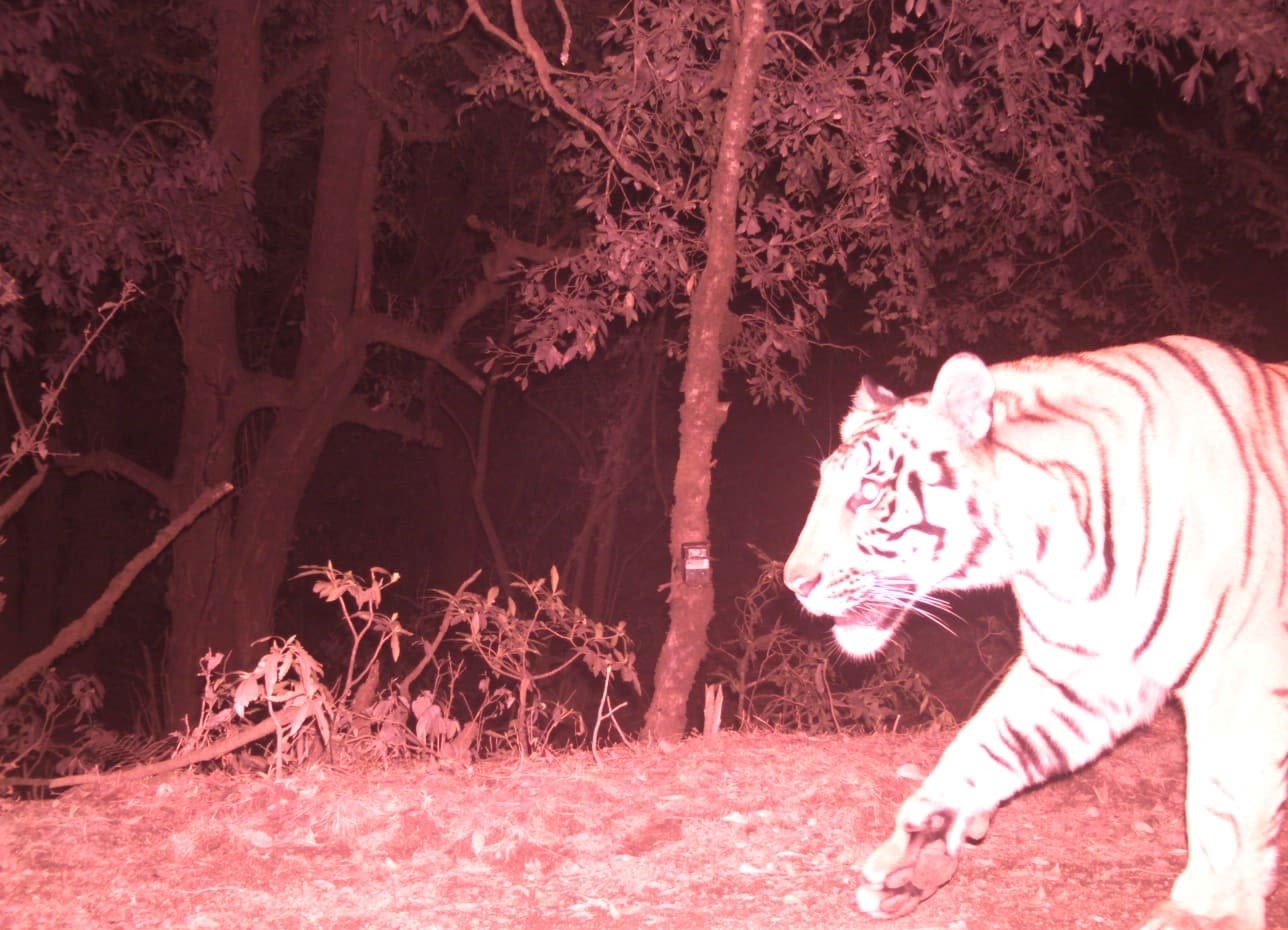
So what do we need to do to prepare for the movement of tigers in high altitude areas?
When it comes to tigers in high altitude areas, for me, there are two main areas of focus. First and foremost, we need a lot more research and monitoring. Next, we need to make sure these areas are adequately protected to keep both wildlife and people safe. So this involves not only protecting against illegal wildlife trade but also working alongside communities to ensure human-wildlife conflict management approaches are in place.
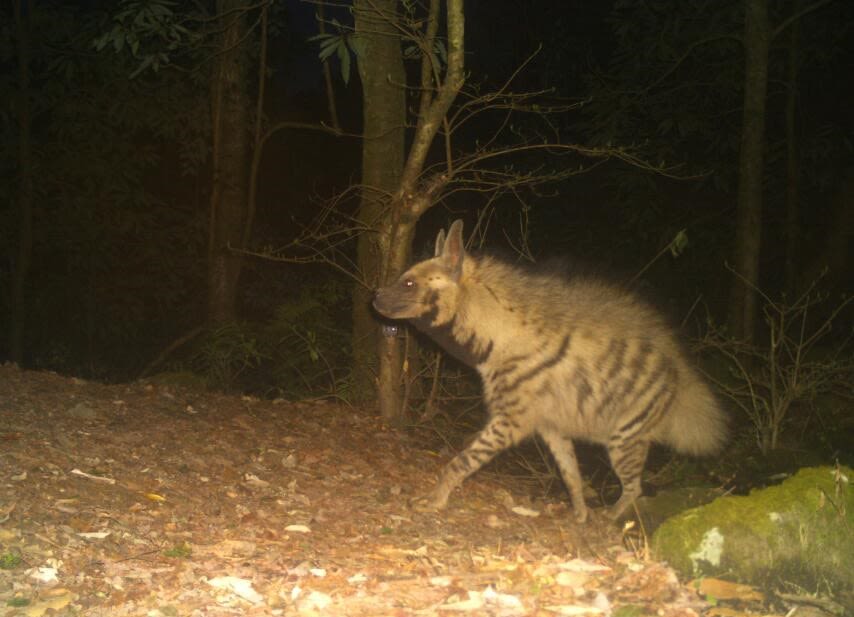
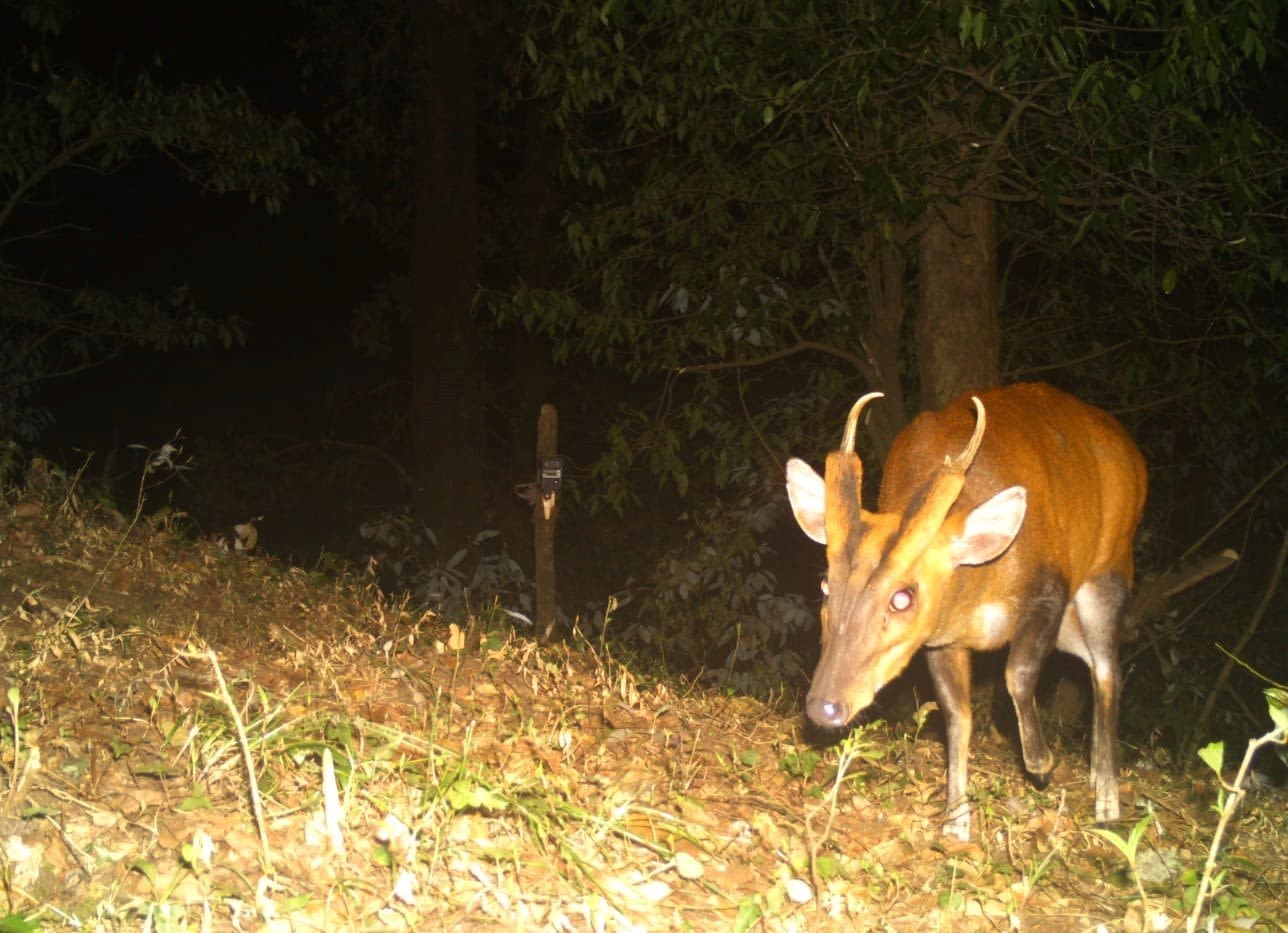
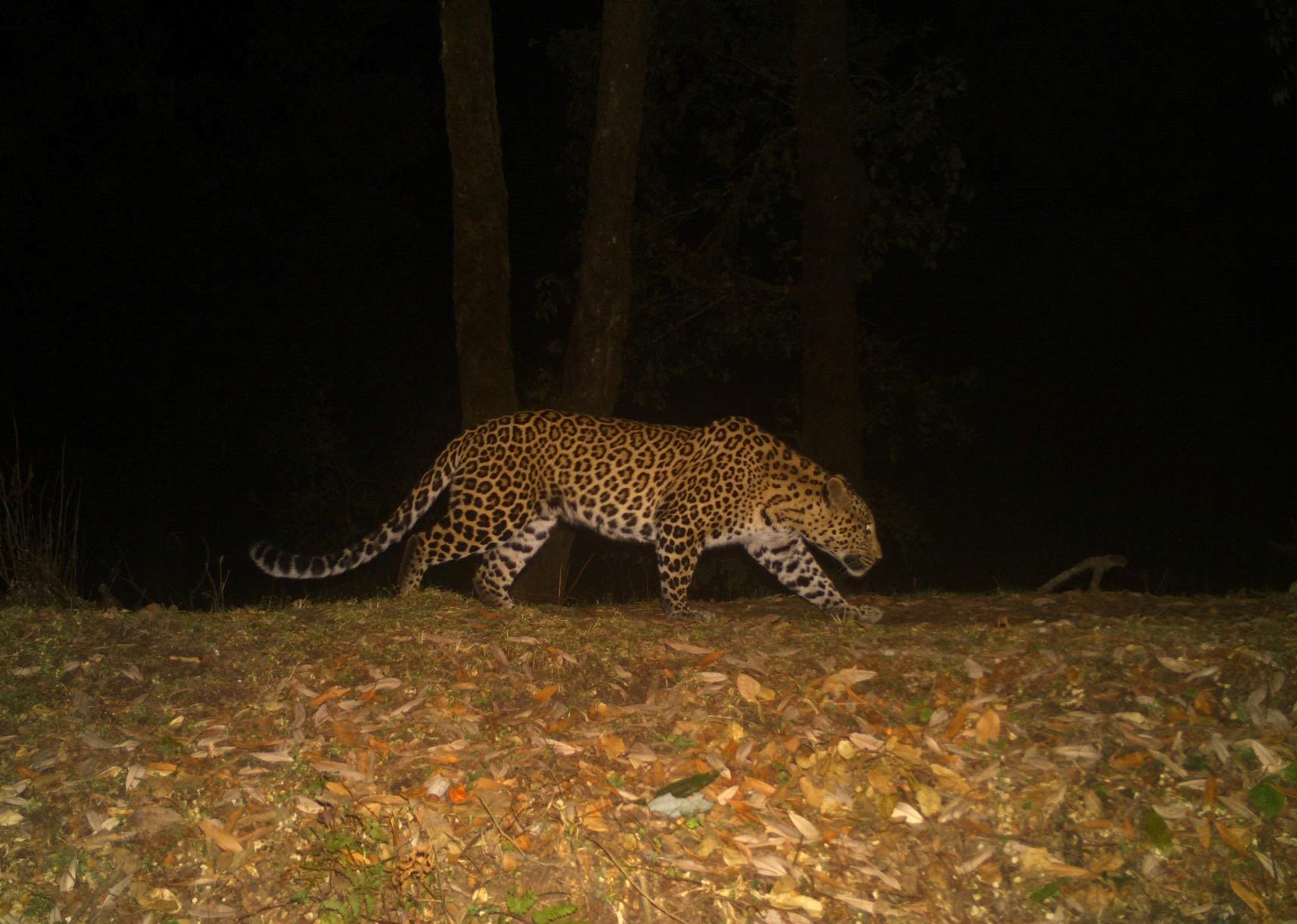
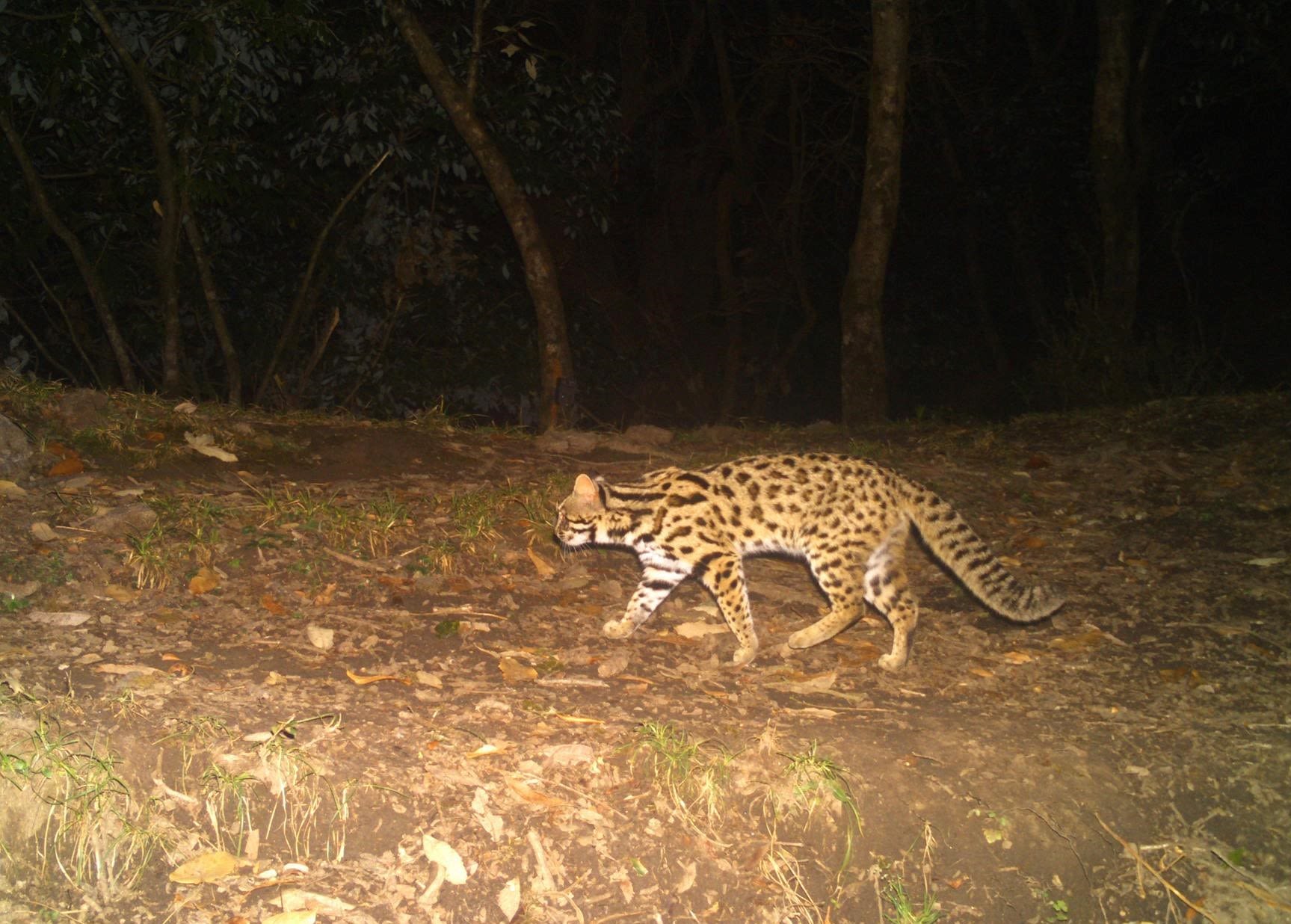

A Striped Hyena (Hyaena hyaena) also documented during the camera trap survey in Dadeldhura, Western Nepal, where the country's first high altitude tiger was documented at 2,500 metres. © DoFSC / WWF Nepal
A Striped Hyena (Hyaena hyaena) also documented during the camera trap survey in Dadeldhura, Western Nepal, where the country's first high altitude tiger was documented at 2,500 metres. © DoFSC / WWF Nepal

A Barking Deer ( Muntiacus muntjak) also documented during the camera trap survey in Dadeldhura, Western Nepal, where the country's first high altitude tiger was documented at 2,500 metres. © DoFSC / WWF Nepal
A Barking Deer ( Muntiacus muntjak) also documented during the camera trap survey in Dadeldhura, Western Nepal, where the country's first high altitude tiger was documented at 2,500 metres. © DoFSC / WWF Nepal

A Common Leopard (Panthera Pardus) also documented during the camera trap survey in Dadeldhura, Western Nepal, where the country's first high altitude tiger was documented at 2,500 metres. © DoFSC / WWF Nepal
A Common Leopard (Panthera Pardus) also documented during the camera trap survey in Dadeldhura, Western Nepal, where the country's first high altitude tiger was documented at 2,500 metres. © DoFSC / WWF Nepal

A Leopard Cat (Prionailurus bengalensis) also documented during the camera trap survey in Dadeldhura, Western Nepal, where the country's first high altitude tiger was documented at 2,500 metres. © DoFSC / WWF Nepal
A Leopard Cat (Prionailurus bengalensis) also documented during the camera trap survey in Dadeldhura, Western Nepal, where the country's first high altitude tiger was documented at 2,500 metres. © DoFSC / WWF Nepal
From forest fires, floods, landslides and droughts, climate impacts are being felt across the tiger range. How will tigers be affected?
Here’s one example of how tigers might be affected by climate change impacts: with wetlands drying up during prolonged periods of drought, water availability may change, meaning tigers may have to venture longer distances to find water. This could cause them to move towards settlement areas, bringing them in closer proximity to people. So that’s why our focus is on habitat restoration and management of existing wetlands to create a suitable environmental condition within their existing territory so they don’t have to venture beyond their home range.
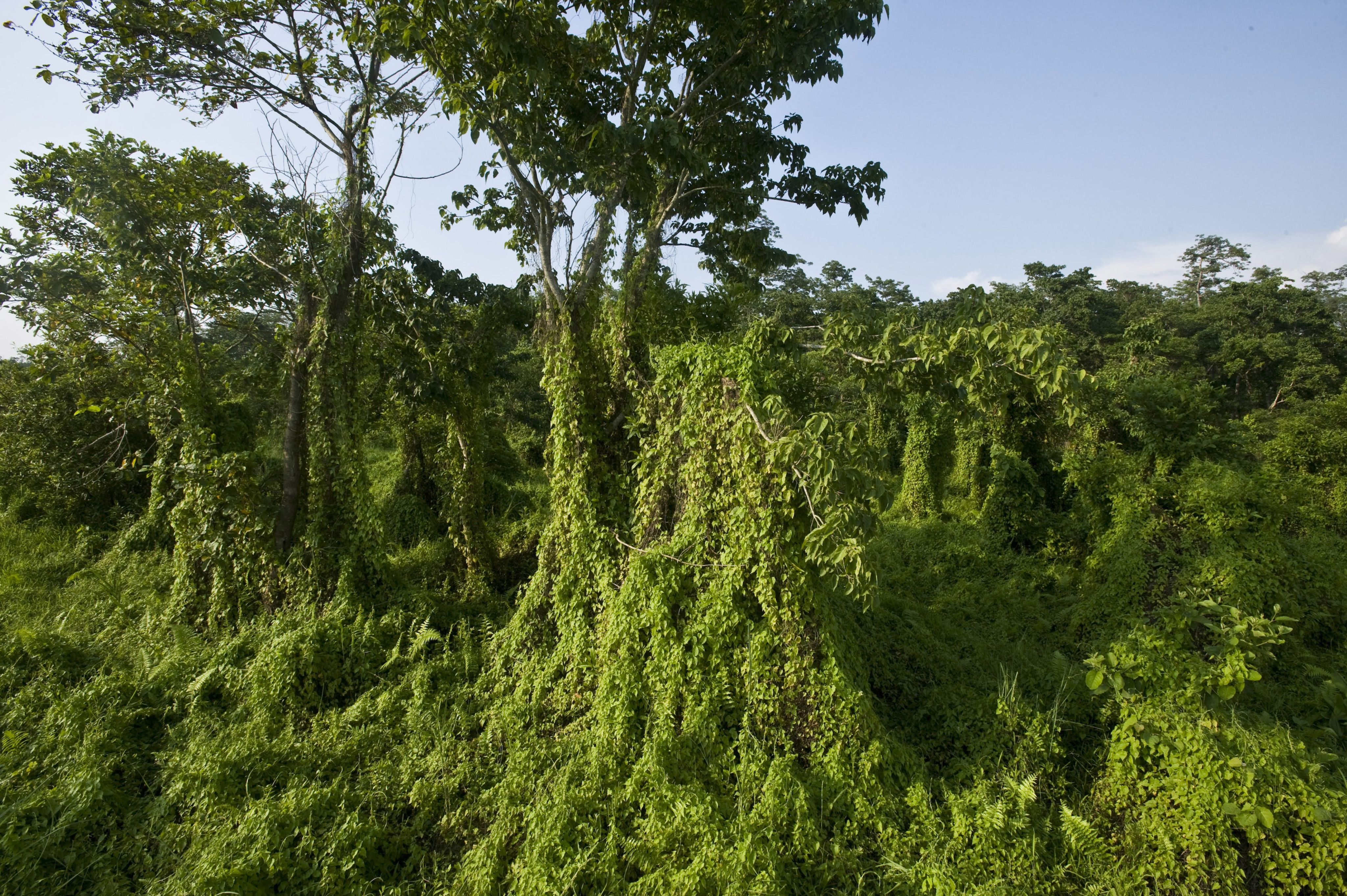
Mikania ('mile a minute') is an invasive climbing weed that kills native plant species and is widespread throughout Chitwan National Park, Nepal. Climate change impacts have encouraged the growth of these invasive plants, which pose a serious threat across tiger habitats. © Simon de TREY-WHITE / WWF-UK
Mikania ('mile a minute') is an invasive climbing weed that kills native plant species and is widespread throughout Chitwan National Park, Nepal. Climate change impacts have encouraged the growth of these invasive plants, which pose a serious threat across tiger habitats. © Simon de TREY-WHITE / WWF-UK
What’s a mystery about tigers we have solved over the past 12 years?
For me, camera trap technology has helped uncover so much more about tigers — their behaviours, movements, and needs. They’ve played a big role in how we conduct census across the tiger range. So I think they’ve helped us crack the code in terms of how to approach the task of counting tigers.
What’s a mystery about tigers we have yet to solve?
There are many remaining mysteries. For example, we have little information on the realities faced by tigers outside protected areas. Since we are not monitoring them in these areas, we don’t know how they’re responding to extreme weather changes, conversion of habitat and other mounting threats.
Widening our lens to forests beyond protected areas will also help us identify potential ‘climate refugia’ — places that have more ability to withstand the impacts of climate change. As climate impacts worsen in the decades ahead, these sites will be all the more important for tigers, because it will affect them on all fronts — impacting their water, prey and shelter.
What keeps you doing what you do?
Initially, I wanted to be an environmental specialist focusing on pollution. But when I visited Chitwan National Park for the first time, it really changed my goals. Since then, I’ve always felt nature itself is pulling me in and continues to keep me on the edge of my seat working away on keeping it intact for future generations.
With respect to tigers, given the challenges ahead, we simply cannot lose focus, so that also keeps me going. Like tigers, conservation is constantly adapting to new challenges and best practices, which has always been fulfilling for me. The urgency brings new technologies, tools, mechanisms, voices, and strategies from across the tiger range, so that transboundary element has also kept me transfixed. It’s a culmination of all those factors.
